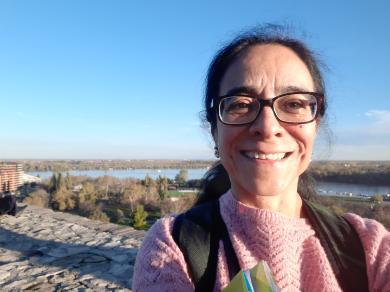SCAF Workshop on Mapping the Scottish Food Landscape | May 2024
Published: 24 May 2024
The workshop aimed to understand what type of mapping work and research is taking place across Scotland, bringing it stakeholders across disciplines and sectors together to identify strengths and gaps.
An overview of the SCAF Workshop on Mapping the Scottish Food Landscape
By Dr Ada Garcia, Senior Lecturer in Human Nutrition | School of Medicine, Dentistry & Nursing | University of Glasgow

On a sunny April morning, I travelled to the University of Edinburgh’s Climate Change Institute to join peers from across Scotland for SCAF’s mapping the food landscape workshop.
Dr Peter Alexander, co-lead of the SCAF mapping research theme, kicked off the workshop with an overview of what mapping the food system means, explaining that it encompasses collecting and analysing data with the purpose of using it as a tool to inform consumers, organisations, researchers, government agendas and policymakers. By identifying and understanding any inefficiencies and vulnerabilities, we can highlight opportunities for improvement and inform decision-making.
To map the food system, we must understand what information exists, its sources, who can access it, in which form it is available and its quality. More specifically, the type of data could include information on production, provenance, distribution, trade, processing, retail, purchase, consumption, waste, nutrient profiling, nutrient intake, as well as consumer, behaviour and health outcomes.
The introduction was followed by a series of short “show and tell” presentations, the highlight of the morning session. Howell Davis (Interface) shared their experience in intelligence gathering over the past 20 years, while Dr Ana del Valle (James Hutton Institute) presented her project on co-constructing a suitability map for upscaling small horticultural businesses with the aim of identifying potential for market gardens to increase their proportion of fresh food supply. Ifeyinwa Kanu (IntelliDigest) told us about mapping stakeholders who use a World Food Tracker to gather information at a global scale.
Dr Alexa Bellows and Dr Joe Kennedy from the University of Edinburgh explained the mission of the Good Food Nation Living Lab and how they support government decision-making around policy. This includes mapping existing data sources, identifying gaps and using mathematical modelling to generate potential outcomes. Following this, Fraser Rowan from the College of Arts and Humanities Partnership Food Catalyst shared the mapping activities led by Lindsay Middleton that resulted in The Scottish Food Library – a physical resource that maps food catalyst sustainability, heritage and tourism, activities and events.
Campbell Reid from Zero Waste Scotland talked about the resources they developed to map food waste and the future mapping activities they are undertaking to understand household food waste behaviours, and improve methodologies for measuring food waste. For my moment in the spotlight, I shared my research on gathering data on commercial baby foods to understand infant environmental exposures, a topic I am passionate about.
Sarah Duley from the Soil Association Scotland spoke about their goals and activities, including gathering data on farming and land use, agroecology, agroforestry, as well as information on how to reduce chemical inputs. Mali Gravell (Argyll and Bute Council) took us through the interdisciplinary work taking place in Argyll and Bute council which combines information from the food law register to map food wholesalers with information on food purchases and procurement. This information is fed into a Power Business Intelligence (BI) map, an analytical tool to manage, visualise and share data.
SCAF lead Emilie Combet spoke about mapping the capacity within the SCAF membership through the creation of an interactive map and Baukje de Roos from the Rowett Institute (University of Aberdeen) shared the research activities they are undertaking with the purpose of understanding the Scottish food supply chain, including the creation of the Scotland’s first food balances sheets.
After lunch, Rachel Norman from the University of Stirling and co-lead of the SCAF mapping theme led the afternoon session where we collaboratively explored what data we currently have, what data we are currently collecting, what is missing and what can be done in partnership.
Overall, the day was a great success bringing participants attending both in person and online. We now understand that a mechanism needs to be designed to optimise the access and use of this data. Given the complexity of the food system, mapping requires working in partnerships across institutions and disciplines, encapsulating SCAF’s shared vision.
First published: 24 May 2024
<< Blog

